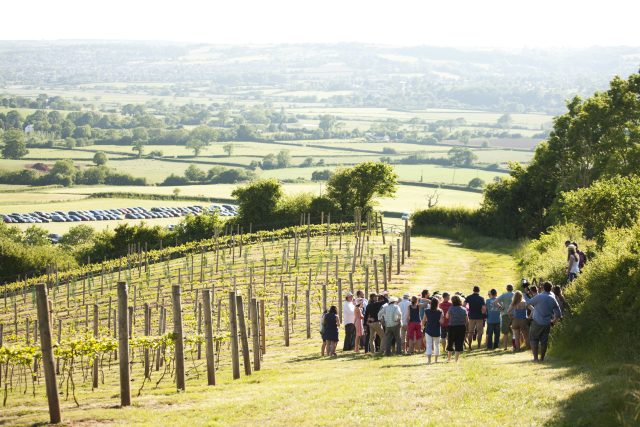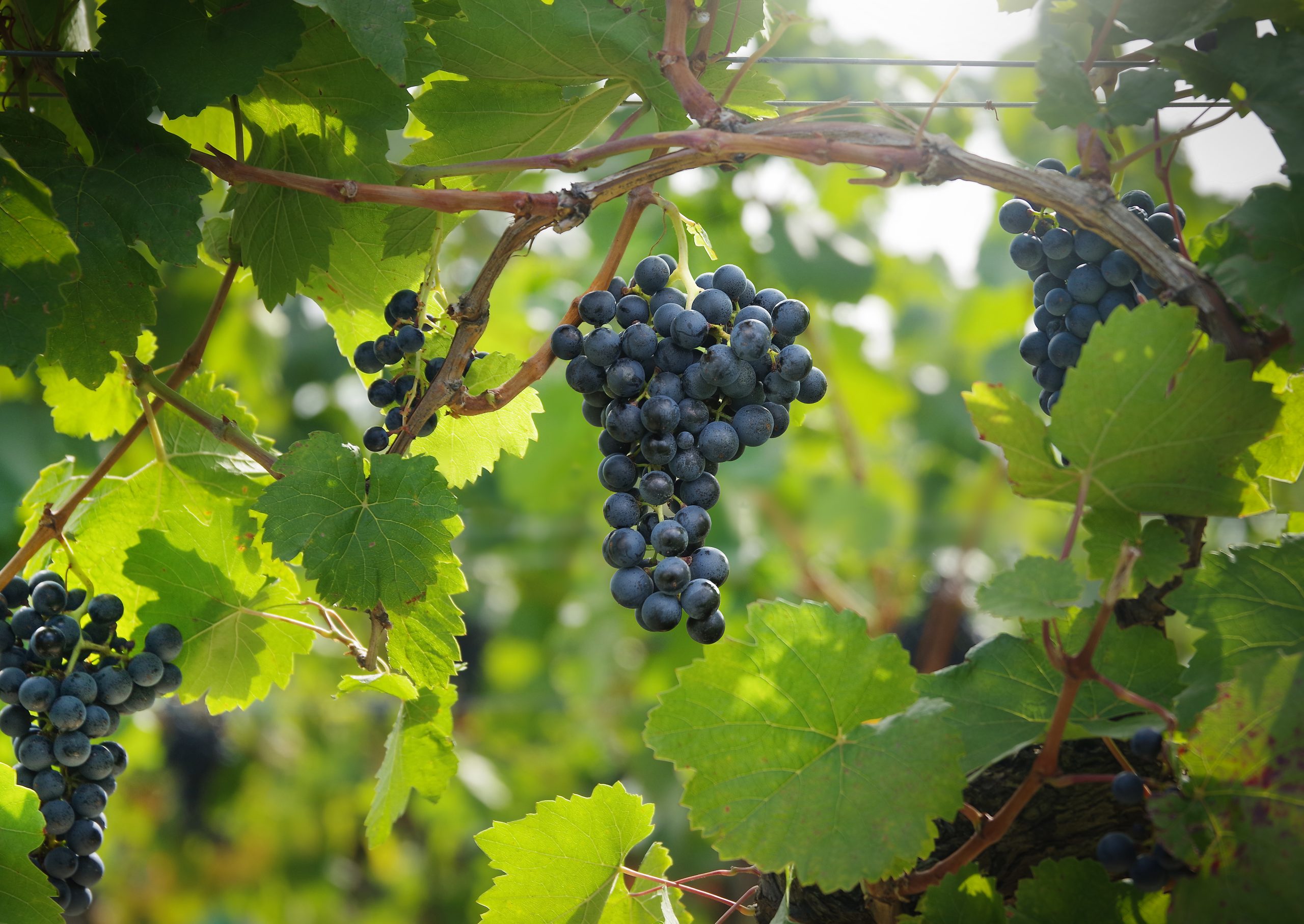Could English vineyards be next for rot?
A new in-depth weather study predicts that Britain will be hit by a deluge of “never-ending rain” during the next 10 years. Should English winemakers put contingency plans in place now? db investigates.

According to a new report by the World Weather Attrition group, Britain will increasingly see monsoon-like rains over the next decade, as well as more frequent hail storms and even “mini tornadoes”.
Future downpours are expected to last for longer periods of time, including through the summer months, with the report’s authors warning that Brits should prepare for an uptick in floods between now and 2034.
“Massive supercell storms will become more likely year-round, bringing increased flash flooding,” said Bill McGuire, a leading expert in geophysical and climate hazards at University College London.
UK regions with the highest average temperatures, particularly those in southern and central England, are likely to see the worst storms.
The news is likely to rain on the parade of the English wine industry just as it enters its next crucial phase of growth. Speaking to db in February, WineGB CEO Nicola Bates said that the next period was “critical” for English wine. In 2024, she argued, the category will start to become a mature market, during which time “regulation becomes a more pressing concern, as do issues relating to reputation and protection.”
Increased flooding in English vineyards could lead to significant mildew attacks, such as the “virulent outbreak” experienced in Bordeaux this spring, just when English wine producers want to guarantee volumes and quality for consumers.
db investigates what measures can be taken now to protect English vines over the coming decade.
Big data
While James Davis MW, general manager of Bolney Wine Estate in Sussex, acknowledges that English viticulture is “largely benefiting from a warming climate”, with increased temperatures having been “helpful overall” to the English wine industry, especially in terms of yields, other factors related to global warming may not be quite so beneficial.
“At Bolney we are aware of significant and increased rainfall, and are adapting to it,” he tells db.
“We have been proud early adopters of grapes such as Rondo and Dornfelder, which have disease resistance and can more ably withstand weather conditions such as extreme rainfall. Such grapes also have a lower CO2 footprint compared to grapes such as Chardonnay and Pinot Noir.”
In addition, Davis says, “we believe that the use of big data to help identify disease-prone areas in the vineyard can potentially help us mitigate and minimise use of vineyard spraying in the event of large and significant rainfall events.”
Some climate experts are calling for Britain to reforest bare hillsides to soak up water run-off in the case of torrential rain. However, for Douglas Jacobsohn, co-owner of English Sparkling brand Busi Jacobsohn, surviving the forthcoming deluge “is fundamentally all about drainage.”
“When we spent a lot of money ensuring the site was draining well, some people questioned why we did it. But the recent weather has proved how important it was to do this,” he says.
Co-owner Susanna Busi Jacobsohn agrees, stating that the drainage “acted like an insurance policy” for when severe weather events struck, especially during the latter part of the growing season when grapes were on the vine.”
Matthew Berryman, viticulture, land and farm consultant with Sussex-based firm CLM, agrees that “installing drainage pays dividends.”
Speaking exclusively to the drinks business he says: “Even if it costs, say, £2,000 per acre, this can more than pay for itself over a 25-year period, but if there’s even a slight risk of flooding at a site, you’re best looking elsewhere.”

Partner Content
How will rain impact vineyard prices?
The prediction of future flooding could have a knock-on effect on land prices, and is likely to cause those investing in vineyard sites to become even more forensic in their research.
“As the country experiences more rainfall events, viticulturists will be increasingly mindful of the flood risk a site presents. If there’s one thing vines don’t like, it’s wet feet,” says Berryman.
As the weather changes, Berryman explains, understanding “where a piece of land is in relation to the sea and to watercourses, as well as the land’s elevation and the type of soil it has, dictating how it will drain,” will become increasingly paramount.
“As temperatures continue to climb, there will be ever-more land potentially suitable for growing grapes, so don’t take an unnecessary risk by situating your enterprise on ground where this could be an issue,” he advises.
According to Berryman, the value of vineyards – and land suitable for viticulture – which has been constantly rising in recent years, is likely to become more polarised.
What will develop, he predicts, is a two-tier market, with “an ever-wider gap between the prices buyers are prepared to pay for the best land and what they are prepared to pay for the rest.”
For the ‘best’ land, “average prices are likely to continue to rise, especially in the South-East… even if the frequency of rainfall events increase.”
The market will become hyper-localised, “with plots of ground, even just a few miles apart, worth vastly different amounts,” says Berryman.
“Establishing a vineyard is a capitally intensive business, so it doesn’t make sense to buy land which brings unacceptable risks. The possibility of flooding could render a vineyard unsaleable.”
Currently, Berryman estimates, “established vineyards in England can easily make £35,000 per acre and often as much as £50,000 per acre or even more if the vines have been well-managed and are less than 10 years old. Meanwhile, bare land suitable for viticulture is changing hands for top side of £14,000 per acre – and this figure could easily rise above £20,000 or even £25,000 in some instances.”
Speaking to db, WineGB CEO Nicola Bates confirms that the trade body is “committed to supporting our members in navigating the ups and downs of growing grapes in a marginal climate.”
“Earlier this year we joined the Horticulture Crop Protection (HCP) group, which gives us access to shared knowledge, new plant protection products coming onto the market, and any potential risks that require emergency authorisation.”
Together, Bates says, “we’ll be best placed to respond to disease pressure incidents and ensure growers have the right information to protect their crops.”
Bordeaux rot
As db reported, fungal diseases such as downy mildew, powdery mildew and grey rot damaging the grapes have been such a cause for concern in Saint-Emilion that last year a helpline was setup for “traumatised” vignerons.
The 2023 vintage saw significant mildew pressure, similar, for some producers, to that of 2021.
Speaking exclusively to the drinks business in a separate interview, Philippe Marion, general manager of Barton & Guestier, said there had been “huge mildew pressure”, the likes of which he had “never experienced so early on in the year.”
Calling it “the worst spring for 30 years”, Marion added: “The flowering is expected to happen in the next days and we pray for drier weather. But we have a bit of the 2022 and the 2023 vintage still left to sell and those are of great quality, so we are all happy as the French say!”
Related news
For the ninth day of Christmas…




